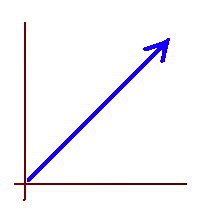Sparing some test-takers the abstraction of modern algebra
Here is a specific type of problem that usually confuses many students who are preparing for standardized tests like the GMAT, GRE, and SAT:
Let the operation Δ be defined as aΔb = (a2 - b)/(a+b) for all real numbers a, b such that a does not equal -b. If a = 15 and aΔb = 5, what is the value of b?
One source of confusion here is the symbol used to represent the operation (either Δ, or θ, or @, or other similar symbol). To the student, these symbols seem unusual, odd, strange, or weird. The main confusion source is the word “operation” itself, referring to the odd-looking symbol. This causes a particularly strong reaction in students who have been away from school a long time, not taking any math classes in the last several years. When they hear or read the word “operation” in connection with math, they automatically think of the four classic operations they are familiar with since elementary school: addition, subtraction, multiplication, and division. They know that weird-looking symbol is none of them.
When they ask me questions about this type of problem, often the conversation unfolds like this (using the example problem above):
~~~~~
Student: What the heck is that symbol Δ? That is not an operation, is it?
Tutor: No, you are right, it is not an operation. Nobody uses that in math. It is nothing like the quadratic formula, or something. No.
Student: So, why are they saying it is an operation?
Tutor: Oh, do not worry about it, it is nothing, they are just making it up. It is a made-up operation.
Student: But, why? Just to confuse me?
Tutor: You got that right. They want to see if you can plug in whatever values they give you, and go along with whatever expression comes out of that. For example: let’s say a=1 and b=2.
Then we have 1Δ2 = (12 – 2)/(1+2) = -1/3. Now, I bet you can do this other example: if a was 3 and b was 5, how much would 3Δ5 equal?
Student: So, is that it? I just have to plug in the numbers?
Tutor: Yes, that is right, the numbers, or the expressions the problem gives you.
Student: O.K., then: (152-b)/(15 + b) = 5. Oh, well, now I have an equation, and I can solve for b.
Tutor: Perfect.
Student [after solving the equation]: Pfff! That is easy.
Tutor: Good, excellent!
Student: It was just plugging in the numbers, and solving the equation but they make it seem so complicated at the beginning with that weird symbol.
Tutor: Yes, I know. That is exactly what they do. So, just be prepared for those weird-looking, out-of-the-blue, made-up operations. Do not let them surprise you.
~~~~~
In abstract algebra, a binary operation on a given set is a function taking two input values from that set, and returning an output value in the same set. The set does not even have to be a set of numbers. So, if you want to get technical, the question of whether or not a formula like (a2 - b)/(a+b) defines an operation, really has to do with the domain and codomain of the function.
In this particular example (a2 - b)/(a+b) is not a binary operation on the set of real numbers, because the restriction that the denominator needs to be other than zero excludes the set {(x, -x)} from the function’s domain. You could call it a partially defined operation. Other formulas, like sqrt(ab), the geometric mean of two numbers, are operations only on the set of positive numbers, because the product ab needs to be positive for the square root to be defined.
However, I do not get into any of these abstract concepts with my students, unless they specifically ask, with curiosity, and with an open mind because, otherwise, it would be Greek to them, and it would be a waste of their time. In most cases regarding this particular type of confusion, test takers only want validation that they are not crazy, and that they did not totally miss a whole classic operation (like addition, subtraction, multiplication, and division) during elementary and middle school. So, I want to address their concern, and make sure they know I understand their question; the source of their surprise and confusion. I want to increase their confidence in themselves, that they can successfully solve the problem on their own. To do it, they do not need to know anything about abstract binary operations in algebraic structures. That is a topic CSET takers need to pay some detailed attention to but not GMAT, GRE, or SAT takers. There is no time for me to go into such topics with them. The typical student only wants to know how to solve the problems. They are quite comfortable with their familiar belief that the word “operation” must mean addition, multiplication, subtraction, or division. They are not paying me to make them go through all the mental gymnastics it would take them to overcome their resistance to expand their concept of “operation.” So I just give them what they are looking for, that is, the fastest way for them to be able to solve the problems, and to feel good about it.
Golden iteration
-
The expression converges to the golden ratio φ. Another way to say this is
that the sequence defined by x0 = 1 and for n > 0 converges to φ. This post
wi...
1 day ago




